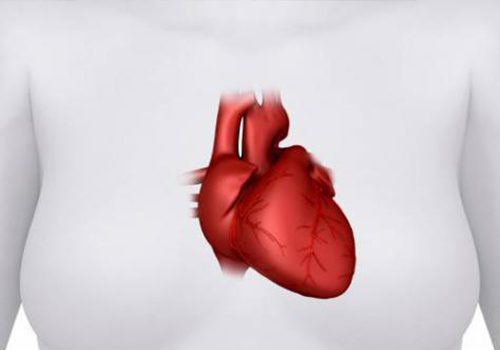Heart and blood vessel disease — also called heart disease — includes numerous problems, many of which are related to a process called atherosclerosis. Atherosclerosis is a condition that develops when a substance called plaque builds up in the walls of the arteries. This buildup narrows the arteries, making it harder for blood to flow through. If a blood clot forms, it can stop the blood flow. This can cause a heart attack or stroke.
A heart attack occurs when the blood flow to a part of the heart is blocked by a blood clot. If this clot cuts off the blood flow completely, the part of the heart muscle supplied by that artery begins to die. Most people survive their first heart attack and return to their normal lives to enjoy many more years of productive activity. But having a heart attack does mean you have to make some changes. The doctor will advise you of medications and lifestyle changes according to how badly the heart was damaged and what degree of heart disease caused the heart attack. Learn more about heart attack.
An ischemic stroke (the most common type) happens when a blood vessel that feeds the brain gets blocked, usually from a blood clot. When the blood supply to a part of the brain is shut off, brain cells will die. The result will be the inability to carry out some of the previous functions as before like walking or talking. A hemorrhagic stroke occurs when a blood vessel within the brain bursts. The most likely cause is uncontrolled hypertension (blood pressure).
Some effects of stroke are permanent if too many brain cells die after a stroke due to lack of blood and oxygen to the brain. These cells are never replaced. The good news is that some brain cells don’t die — they’re only temporarily out of order. Injured cells can repair themselves. Over time, as the repair takes place, some body functioning improves. Also, other brain cells may take control of those areas that were injured. In this way, strength may improve, speech may get better and memory may improve. This recovery process is what rehabilitation is all about. Learn more about stroke.
Other Types of Cardiovascular Disease
Heart failure: This doesn’t mean that the heart stops beating. Heart failure, sometimes called congestive heart failure, means the heart isn’t pumping blood as well as it should. The heart keeps working, but the body’s need for blood and oxygen isn’t being met. Heart failure can get worse if it’s not treated. If your loved one has heart failure, it’s very important to follow the doctor’s orders. Learn more about heart failure.
Arrhythmia: This is an abnormal rhythm of the heart. There are various types of arrhythmias. The heart can beat too slow, too fast or irregularly. Bradycardia is when the heart rate is less than 60 beats per minute. Tachycardia is when the heart rate is more than 100 beats per minute. An arrhythmia can affect how well the heart works. The heart may not be able to pump enough blood to meet the body’s needs. Learn more about arrhythmia.
Heart valve problems: When heart valves don’t open enough to allow the blood to flow through as it should, it’s called stenosis. When the heart valves don’t close properly and allow blood to leak through, it’s called regurgitation. When the valve leaflets bulge or prolapse back into the upper chamber, it’s a condition called prolapse. Discover more about the roles your heart valves play in healthy circulation and learn more about heart valve disease.
Content courtesy of Americian Heart Association

